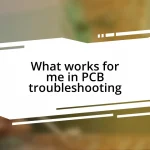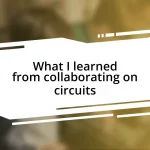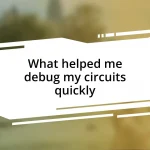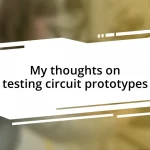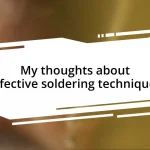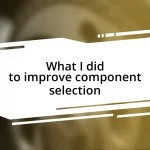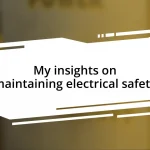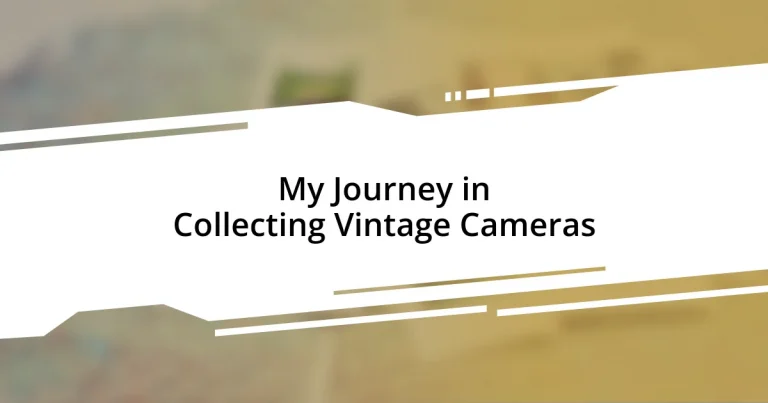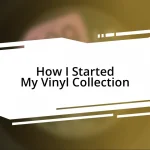Key takeaways:
- The author’s passion for photography ignited in childhood after discovering a vintage camera in their grandmother’s attic.
- Collecting vintage cameras became a journey of exploration, learning the history and unique characteristics of various models.
- Researching vintage cameras led to finding a community of enthusiasts, fostering connections and shared experiences.
- Capturing photos with vintage cameras creates a nostalgic connection, emphasizing craftsmanship and the artistry of photography.
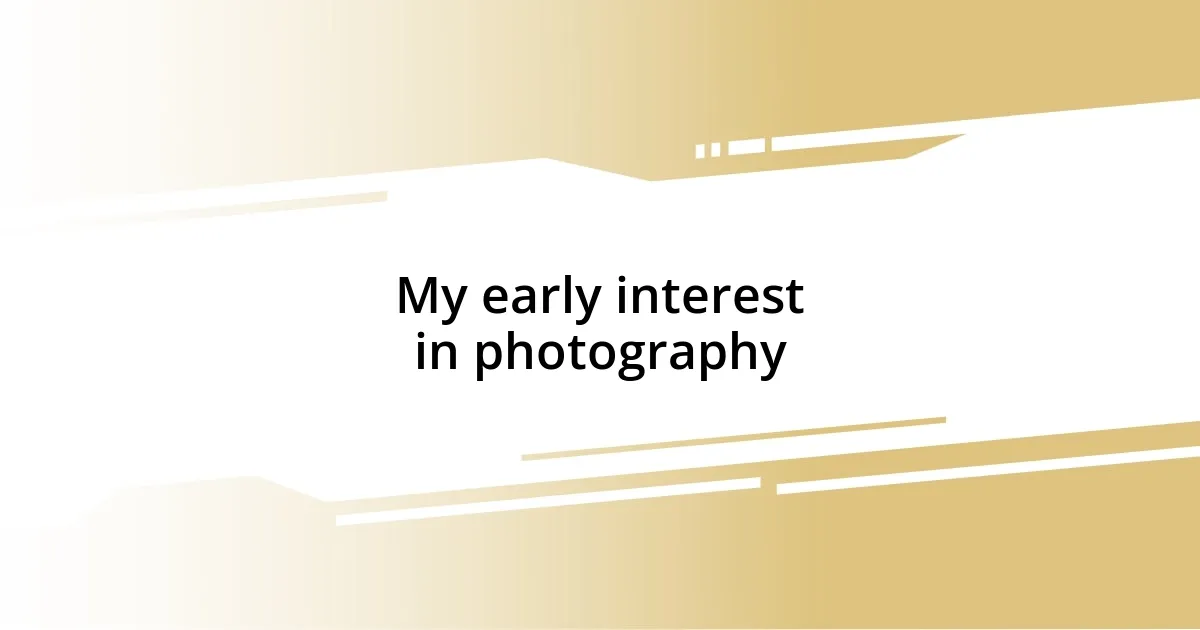
My early interest in photography
From a young age, my fascination with photography began when I stumbled upon my grandmother’s old camera sitting in a dusty attic. I remember picking it up and feeling an immediate connection, as if it held a secret world within its worn leather case. I often wonder, do objects like these echo memories of their past owners, whispering stories waiting to be told?
As a child, I spent hours experimenting with the camera, snapping photos of everything around me—flowers in bloom, my playful dog, and the fleeting smiles of my friends. Each click of the shutter felt like capturing a moment in time, and I marveled at how a simple frame could evoke such deep emotions. Was it possible that a single image could hold more power than words?
I vividly recall one particular afternoon when I chased the golden hour light at the park, determined to capture the sunset’s transformative beauty. The vibrant hues painted the sky, and I felt a rush of joy and excitement, thinking, “This is what I want to do forever!” That feeling, that pure thrill of creation, was the spark that ignited my lifelong passion for photography.
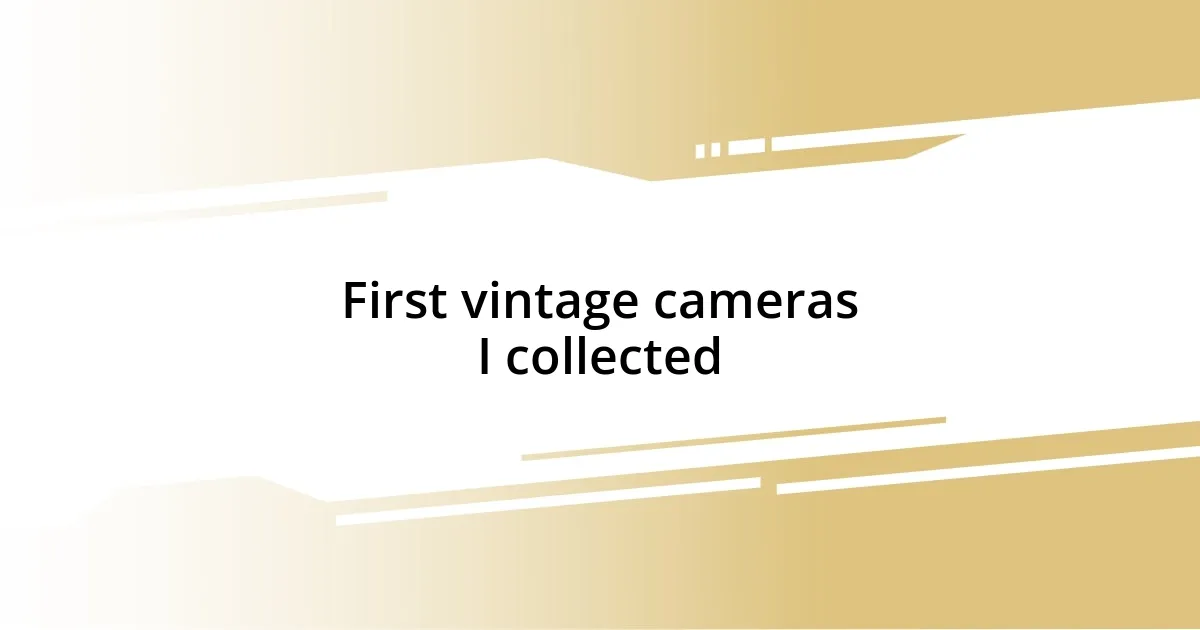
First vintage cameras I collected
The first vintage cameras I collected opened my eyes to a world of history encapsulated in each piece. One of my early treasures was a 1950s Kodak Signet 40, a camera that felt solid and substantial in my hands. I remember capturing my first roll of film with it, the anticipation of waiting to develop those images felt almost like unwrapping a gift. The surprise of seeing each photo unfold on the paper was exhilarating; it taught me that patience is part of the creative process.
- Kodak Signet 40: My first vintage camera, with its robust design and rich colors.
- Yashica D: A twin-lens reflex that reminded me of classic films, it challenged me to think differently about compositions.
- Zeiss Ikon Contaflex: This beauty was a gift from a dear friend, and learning its intricate features felt like navigating through a manual of secrets.
Each camera in my collection wasn’t just an item; they were pieces of art with their own stories, waiting for me to add my narrative. As I explored their functionalities, I often reflected on how far photography has come. Yet, I found a certain charm in their simplicity and the way they connected me to the photographers who once wielded them.
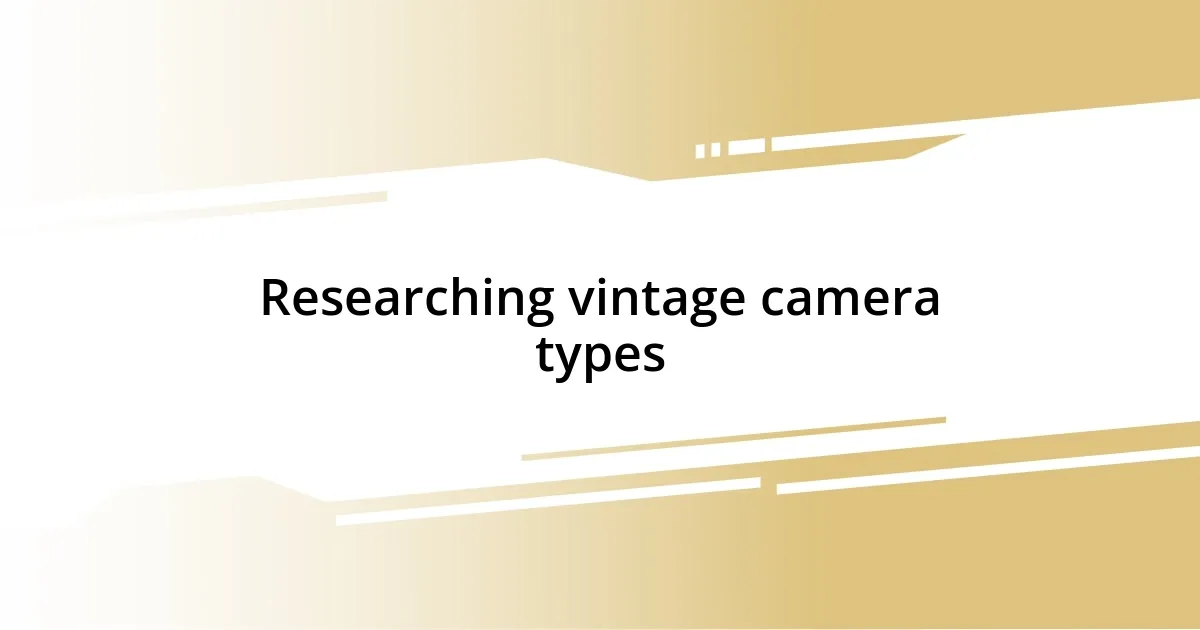
Researching vintage camera types
Finding the right vintage camera type for collection can feel overwhelming at first, but diving into research can be incredibly rewarding. I remember poring over photography books and online resources, trying to decipher the differences between various models. The excitement of learning about rangefinders, twin-lens reflex cameras, and single-lens reflex cameras sparked my curiosity. Each camera type offered a unique approach to capturing images—think how a rangefinder can provide a compact design yet distinct focusing mechanics compared to the classic heft of an SLR.
As I delved deeper, I found that certain brands often had signature features that made their cameras stand out. For instance, Japanese cameras like Nikon and Canon are known for their reliability, while German brands such as Leica and Zeiss produce outstanding optical quality. Reflecting on my journey, I can’t help but share how each discovery led me to new collecting avenues and enriched my appreciation for these machines. Have you ever experienced that thrill of uncovering something special? It’s as if I was piecing together a larger narrative of photography’s evolution.
Researching vintage cameras also opened the door to the vibrant community of enthusiasts who share their insights and experiences. I joined forums and social media groups where collectors exchanged tips on valuing cameras or shared their favorite shooting techniques. That camaraderie and shared passion encouraged my journey further, connecting me with stories of others who had unearthed similar treasures.
| Camera Type | Key Characteristics |
|---|---|
| Rangefinder | Compact design, separate viewfinder, precise focus control. |
| Twin-lens reflex | Two lenses for composition and capture, waist-level viewfinder, ideal for portrait photography. |
| Single-lens reflex | Direct view through the lens, versatile, great for various photographic styles. |
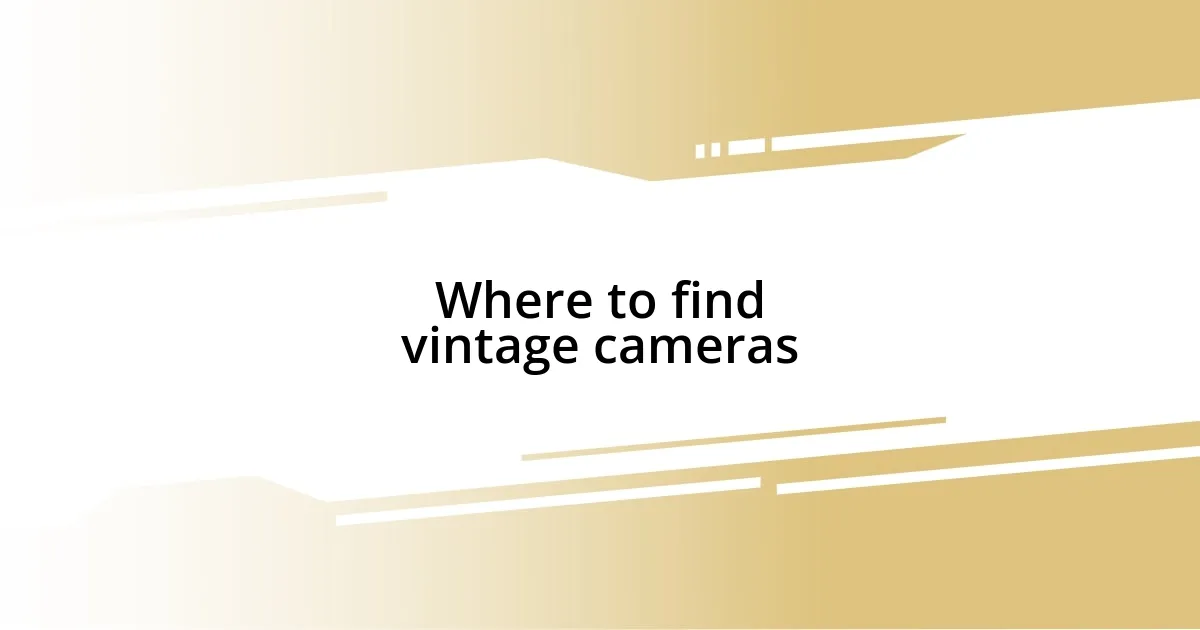
Where to find vintage cameras
I have found vintage cameras in the most unexpected places. Thrift stores, for instance, are like treasure troves waiting to be discovered. I remember strolling through one, my heart racing as I spotted a dusty leather case tucked away on a low shelf. Inside was a beautiful Canon AE-1, just waiting for someone to restore it to its former glory. Hasn’t a simple trip turned into an exciting adventure for you too?
Flea markets can also yield fantastic finds, often packed with history and charm. One Saturday morning, I made my way through a bustling market and stumbled upon a vendor who had an assortment of cameras. I couldn’t help but be drawn to a charming Agfa Clack, with its unique design and easy usability. After a bit of haggling (and a friendly chat about photography), it came home with me, opening new avenues in my collection. Don’t you just love the thrill of bargaining over something that sparks joy?
Online marketplaces like eBay and Facebook Marketplace have become vital resources for collectors as well. I once spent an afternoon browsing listings, and my attention was caught by a fantastic deal on a Minolta SRT-101. I felt a rush of excitement as I clicked “buy now,” knowing that each camera comes wrapped in its own story. Have you explored such platforms yet? It’s here that patience and persistence often pay off, and just like that, your collection could take a beautiful leap forward.
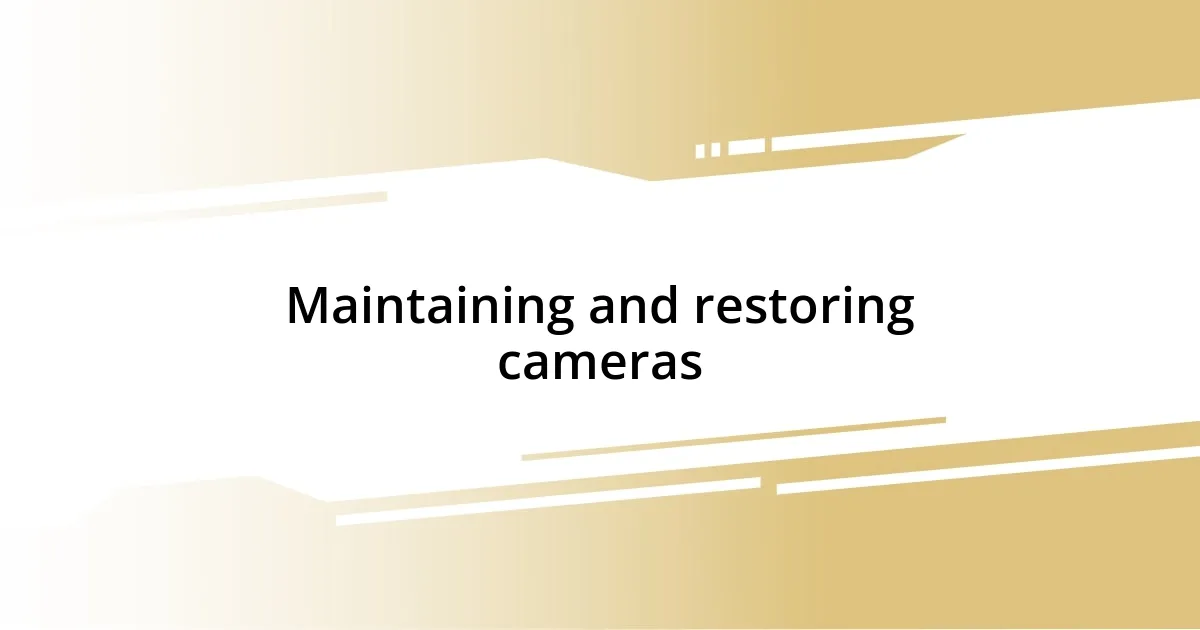
Maintaining and restoring cameras
Maintaining vintage cameras requires a delicate touch and a genuine appreciation for their history. I remember the first time I carefully cleaned a lens—I was both nervous and excited. Using a microfiber cloth and a gentle lens cleaner felt like a rite of passage as I admired how the glass gleamed afterward. Have you ever felt that rush of pride when you restore a piece back to its original splendor?
When it comes to restoring a camera, I’ve learned that research is essential. Navigating forums filled with passionate enthusiasts has been invaluable. I once posted a question about a sticky shutter on my Olympus OM-1 and received a flurry of great advice within hours. The community not only shared their tips but also stories of their own restoration projects, making me feel like part of something meaningful. It’s comforting to know that I’m not alone on this journey—doesn’t that sense of belonging enhance the experience?
Every camera has a unique character that deserves to be preserved. I’ve found joy in sourcing original parts, like seeking out leatherette to replace worn coverings. One day, while visiting a local camera repair shop, I was elated to discover they had the exact part I needed for my beloved Voigtländer rangefinder. The thrill of bringing life back to a historic machine is truly rewarding. How many times have you sought that perfect part only to feel the rush of victory when you finally found it?
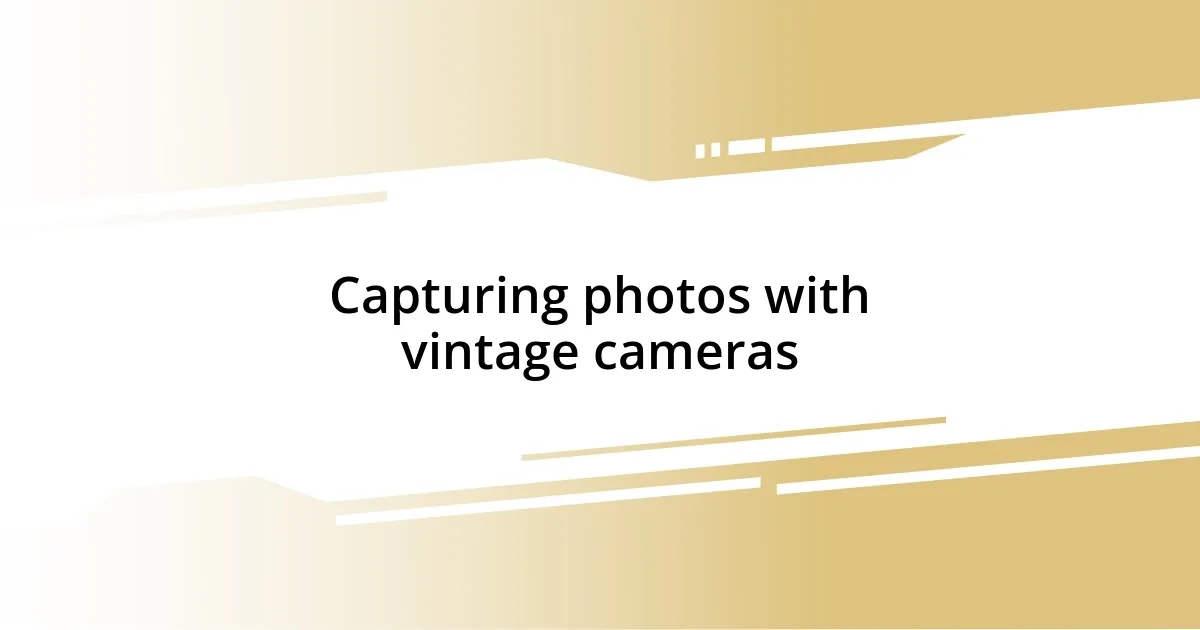
Capturing photos with vintage cameras
Capturing photos with vintage cameras is like stepping into a time machine—every click tells a story. I vividly recall the first image I snapped with my Zeiss Ikon Contaflex. The soft, dreamy bokeh gave the photograph an ethereal quality that my modern digital camera struggled to replicate. Can you remember your first shot that just felt “right”? It’s that magic that makes using vintage cameras so special.
With each roll of film, I feel a deeper connection to the craft of photography. When developing my snapshots, the anticipation grows as I wait to see how the colors come out; there’s a tangible thrill in the unpredictability. I once shot a sunny afternoon in my local park using my trusty Yashica Mat-124G, and the results were stunning. The film captured the play of light beautifully, breathing life into each frame. Have you experienced that rush of nostalgia when flipping through your film photos?
Every time I use an older model, I’m reminded of the craftsmanship and care that went into their creation. The satisfying sound of the shutter embrace and the weight of the camera in my hands feels different compared to modern devices. My heart leaps when I fine-tune the focus ring on my Canon F-1. It feels like I’m engaging in a dance between technology and art. What does that tactile experience mean to you when capturing a moment in time? Each vintage camera I use adds another layer to my journey, encouraging me to rediscover my creative side.
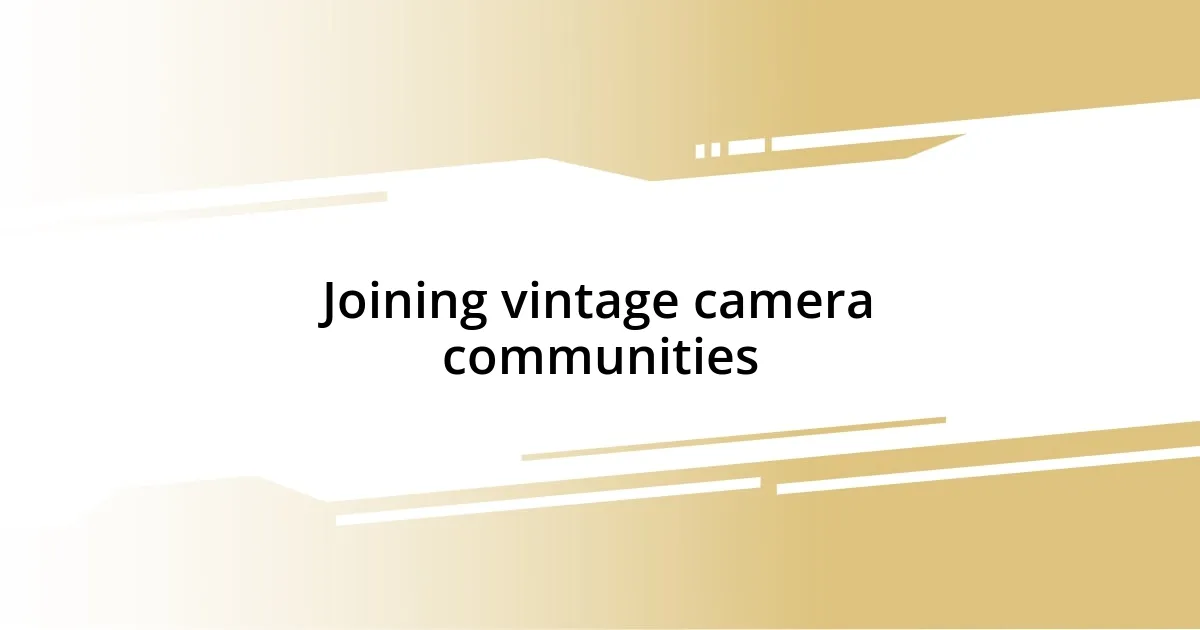
Joining vintage camera communities
There’s something incredibly fulfilling about joining vintage camera communities. I remember the first time I stumbled upon an online forum dedicated to these classic machines. As I read through threads filled with enthusiasts sharing their finds and projects, it felt like stumbling across a treasure chest of knowledge. Have you ever experienced that initial spark of inspiration that comes from being surrounded by like-minded individuals?
Engaging with these communities isn’t just about gathering information; it’s about building friendships too. At one point, I connected with a fellow collector who lived across the country. We began exchanging photos and stories about our favorite cameras, and I even received a rare lens as a gift from him. That sense of camaraderie made my collection feel more meaningful—don’t you think sharing this passion connects us in ways that go beyond just the gear itself?
What truly amazes me is the wealth of resources available through these networks. I’ve attended virtual meetups where collectors share restoration tips and showcase their latest projects. It’s exhilarating to learn directly from those with years of experience. Just last month, a seasoned collector walked me through a lighting technique that transformed my photography instantly. How often do you find yourself inspired by the creativity of others in our shared hobby? Engaging with these communities has not only enhanced my skills but has also deepened my appreciation for the art of photography.
